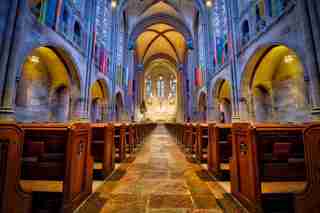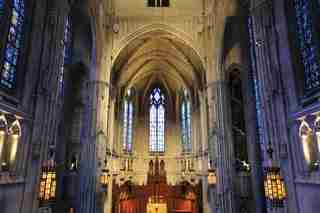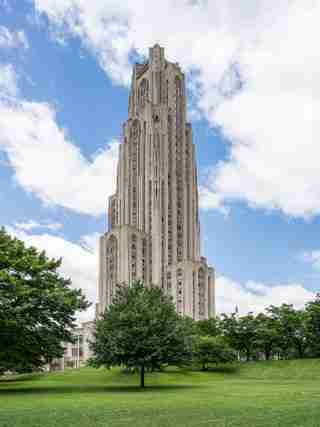Gothic Revival architecture got its start in the late 1700s in Britain. The much-written-about and romanticized Gothic era was resurrected by architects for a nostalgic public. The once sacred architecture that was the Gothic cathedral now became an ideal form for offices, schools, and even homes. Medieval design elements were used in just about every building context—and on multiple continents, too. In the U.S., the trend continued well into the 20th century and in every major city. One city in particular, however, embraced Gothic style in many of its landmark buildings and boasts one of the nation’s finest collections of neo-Gothic architecture. That city is Pittsburgh, and here are six of the best Gothic Revival buildings there.

Cathedral of Hope
Pittsburgh’s East Liberty Presbyterian Church is also known as the Cathedral of Hope. Here, worshippers enjoy a vast medieval-style nave designed in 1935 by architect Ralph Adams Cram, one of the top U.S. practitioners of the Gothic Revival style.

Heinz Memorial Chapel
Here is the first of two Charles Klauder buildings on this list that can be found on the campus of the University of Pittsburgh. Noteworthy fact: The stained glass on Heinz Memorial Chapel depicts an equal number of women and men.

Cathedral of Learning
In the Middle Ages, Gothic architects aspired to build impossibly tall cathedrals. They are often described as “soaring.” So it makes sense that the University of Pittsburgh’s 42-story skyscraper successfully employs Gothic design principles.
Butler Street Gatehouse
The Butler Street Gatehouse seems to play more on our ideas of a medieval castle than a Gothic cathedral, as a gatehouse very well should.
Union Trust Building
Business tycoon Henry Clay Frick commissioned architect Fredrick John Osterling to build the Union Trust Building in 1915.
PPG Place
PPG Place was designed in the 1980s by Philip Johnson and John Burgee, a duo noted for their forays into postmodernism. This Pittsburgh icon is Gothic boiled down to its simplest, most skyward elements.